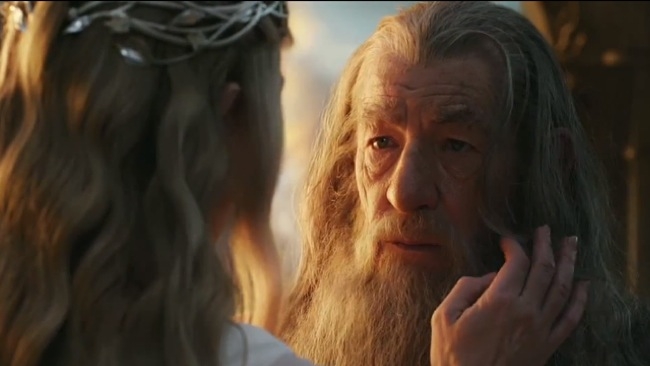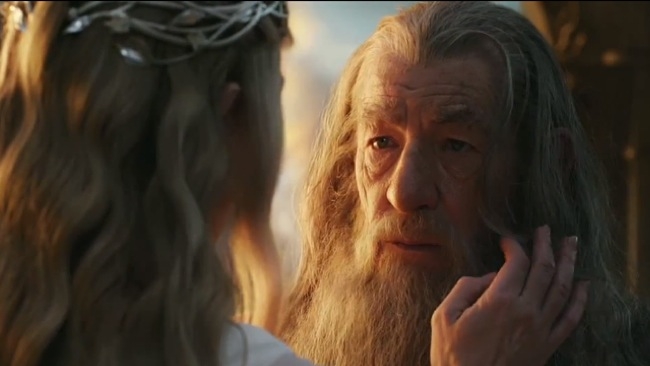
 Why is 24p better for storytelling than 48 fps?
Why is 24p better for storytelling than 48 fps?
We've talked about high frame rates before, and why they look "too real". Now, Redshark contributor Fanjan has a new, fascinating and plausible theory
The Hobbit has now been showing for a while and the discussion is intensifying about the question of 24fps vs. 48fps. What I have noticed from those who took the trouble to watch both the 48fps and 24fps versions is that, at least in my country, the 48fps version is in 3D, whereas the 2D version is usually shown in 24p.
All of this has given me some thoughts, excitement, and tribulations about my future in film and how, if it comes to pass, to adapt. In other words, what we can learn from this debate. But first some random questions.
Questions
Has anyone seen The Hobbit at 48fps in 2D and compared that to the 24fps 2D version? (Although I believe that is impossible, at least at this time). Has anyone watched any 48fps movie in 2D and compared it to the same movie in 24fps? If higher frame rates are better, and for the argument let’s assume they are, why do we not skip 48fps and go straight to 60fps in cinema? The new Panasonic GH3 does 60p at HD (last I checked) natively. My GH2 does it with a hack I believe (I haven't tried it or investigated yet due to recording media implications) .
24fps is cinema's "misdirection"
I have thought, and still think that 24fps is to cinema what misdirection is to the magician. Most of us know that the magician is playing tricks on us, yet we like it, because it gives us enjoyment when he does “magic”. We want to know how the magician did the trick, but we have an even stronger urge not to know because then the enjoyment of the trick is lost on us. The same can be said for telling stories through film media, dramatic and epic stories. You notice the effect of 24fps but our brains process it "out of sight" so that you are “seeing” a story. You see a lie but you like it; you see the magic trick but enjoy the deception.
For cinema we like that this story is fake reality. 24fps gives us that unrealistic reality if you will; 24fps allows us to live in the fantasy world of this story and accept it as reality. But this cinema "misdirection" might have absolutely nothing to do with fps. (Please note that I am not referring to the 3D experience which is an experience in itself.)
However, 48fps seems to be here to stay even if it just becomes a tool like depth of field, lighting, composting etc. Faster frame rates, as many have pointed out from watching The Hobbit, makes the movie look "fake", “like a soap opera" or "a theatre performance". But the movie goers have also commented on how awesome it looks; but again that is in 3D. I also suspect that those for whom it really doesn’t matter, and this might be the majority of the viewers, will not even comment on the difference.
When I watched the movie Public Enemies, I got the impression that the director Michael Mann (due respect given) didn't realise what HD does, in terms of letting the audience get lost in the story. There was so much detail it was distracting; at least I found it distracting. I found it too real. I watched it again a few nights ago and got kind of lost in the story, but suddenly a scene where Edgar and his entourage walk down the corridor... BAM! It feels like I'm watching behind the scenes footage, real world footage; footage of actors playing an act. Then again, maybe it has nothing to do with HD and just the way Mann shot the movie that threw me off? I must add, most of my movie watching happens at home, on a 32inch LCD (or my 15inch laptop) and as for the cinemas where I live, I cannot comment on HD projection.
When I watched 300 - the sound alone makes that a big screen movie, for me.
Resolution, information overload and editing
The book In the blink of an eye by Walter Murchin, he explains how, when he edits, he first needs to know on which medium the film will be displayed, because this will have an effect on the length of a cut. Because of the big screen delivery, his edit screen would have two human-figure paper cut-outs stuck to each side of the screen. The figures are in ratio to his edit screen, and to what a human would be in ratio to the projected screen at the movie house. He mentions that viewing something on the big screen requires longer cuts because your eyes take longer to capture the information and thus your brain needs a longer time to process the information displayed. On the small screen, you see the whole screen at once, so you can process it quicker and subsequently the cut can be shorter.
My point is, with HD and HFR, does it look weird and "fake" because we haven't learned how to create the misdirection through new methods of DOF, lighting and script, make-up etc? (Again referring to 2D.) Is it because we are used to seeing reality on TV and News in HFR and we translate this to the cinema story? Is it the lack of motion blur? Is it because there is just too much information displayed and the cuts are too short? Do we need to be “reminded” by 24fps stuttering that we are living in a fantasy world?
My non-conclusive summary
I'd like to draw this toward some sort of conclusion.
If HFR is here to stay, and 24fps dies, what do we need to learn (in 2D cinematography and in addition - as often forgotten - editing) to be able to recreate the magician’s "misdirection"? And this assumes the average movie goer actually wants misdirection; wants to live the dramatic fantasy story.
I added the last bit to the sentence because to my annoyance reality TV is so popular even when the reality TV show is so blatantly scripted/guided that it borders on insanity! People have been crying for the death of reality TV for probably a decade now (that I know of anyway) and yet every second show is "reality". If "reality" is so popular, do we really have to strive so hard, technically, for "reality" in fiction?
Will movies (“cinematic stories”) become documentaries told in a dramatic way? Will you only be able to create "misdirection" through blatant fantasy worlds like The Hobbit? Will the usual cinematic stories on the big screen circuit be replaced with fantasy stories like The Hobbit because they cannot be told and do not make business sense in the new cinema? Or, like I mentioned, will HFR become a tool, where we now mix frame rates to capture certain actions and evoke certain emotions because HFR (and 24fps) has little or no effect on “cinematic misdirection” and more to do with emotive reaction? Having said that, why do we not then skip to 60fps?
But again, is more detail a good thing? Like cars the majority of us don't drive them more than a 120/140 kph. Is 8K (the next phase in film and video resolution after 4K) and HFR (which brings twice the temporal detail) such a good thing, or do we need to adapt our editing, lighting, and the other cinematic tools in order to create what I like to call, Cinematic Misdirection?
What do you think? Let us see your thoughts in the comments.
Tags: Technology


Comments